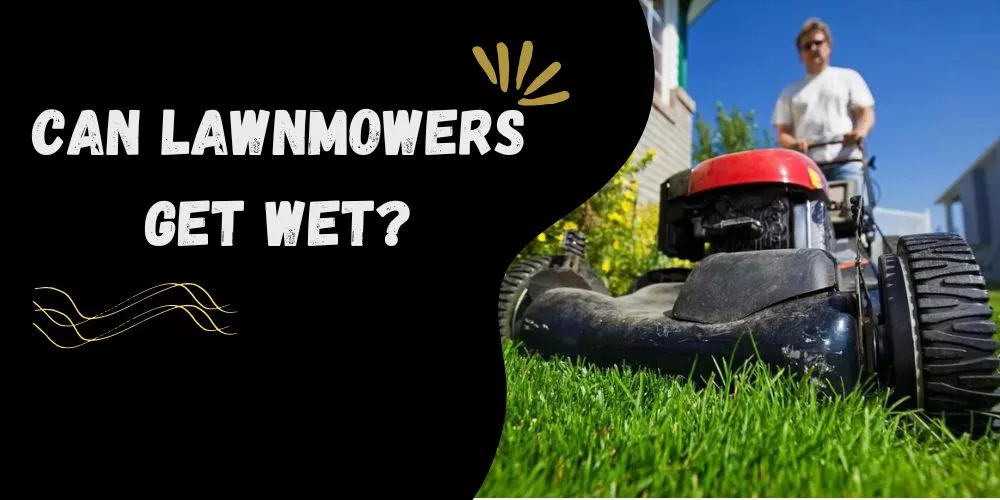Has your riding mower ever refused to budge when you’ve set it to neutral? You’re not alone.
Many people face the issue where they can’t push riding mower in neutral, which might seem small but can be a serious hindrance. Why?
Because the ability to move the mower without engaging the engine is essential for its maintenance, transportation, and storage.
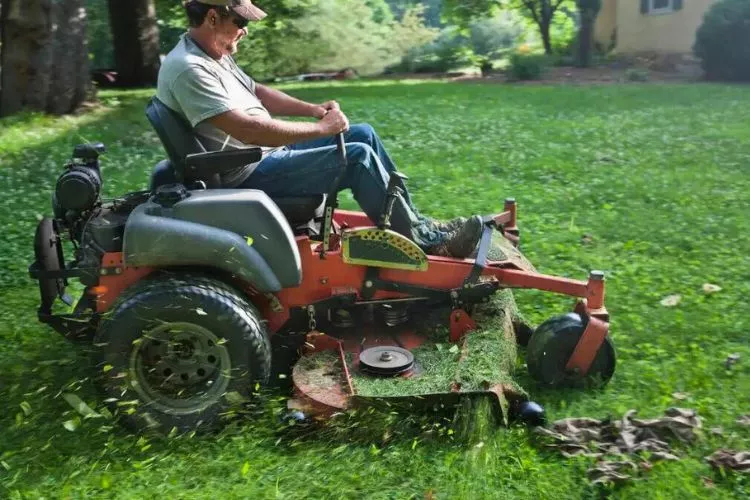
Moreover, pushing a mower in gear can risk damaging the transmission. Understanding this problem is key to a smoother, trouble-free mowing experience.
This article aims to alleviate your frustrations, dissecting the core reasons behind this issue and offering practical solutions.
Get ready to gain insightful knowledge that could save you significant time and potentially costly repairs in the future. Stick with us, and let’s take the push back into your mower.
Table of Contents
Understanding the Problem
Before diving into solutions, it’s crucial to understand the issue’s core. In any vehicle, the neutral gear is designed to disengage the engine from the wheels, allowing free movement. The same applies to your riding mower.
The neutral gear in riding mowers essentially disconnects the transmission so the mower can roll freely. It’s commonly used when the engine isn’t running, making pushing or towing the mower possible.
This is particularly handy when you must relocate the mower or maneuver it around obstacles without starting the engine.
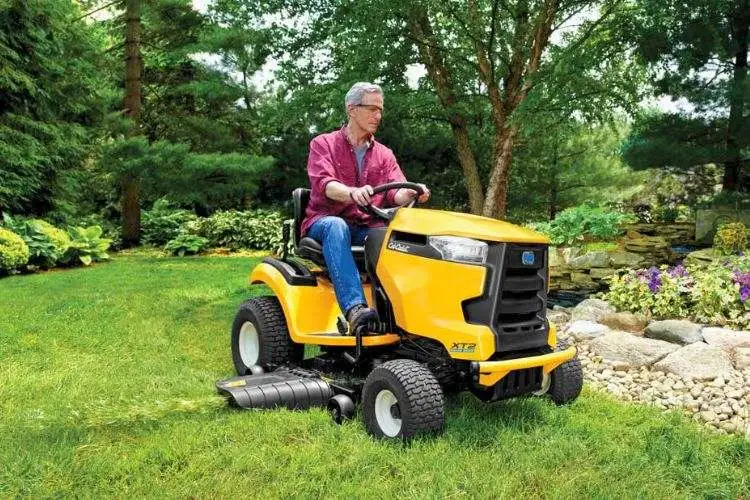
However, sometimes, even when the gear is neutral, you might find that the mower refuses to move. How do you know when your mower is stuck in neutral?
One common sign is when the mower remains stationary despite being in neutral and despite your best efforts to push it.
In other cases, it might move but with significant difficulty, feeling more like you’re trying to push a boulder than a gardening tool.
Why does this pose a potential danger? If you force to push the mower when it’s stuck in neutral, you risk causing undue strain on the transmission system.
The stress could lead to long-term damage, and the cost of replacing a transmission system can be hefty.
Moreover, if you’re unaware that your mower is stuck in neutral and attempt to push it downhill or on an incline, it could suddenly roll away or tip over, leading to potential accidents.
Understanding this issue is the first step to avoiding such risks and keeping your mower—and yourself—in good shape. The next sections will delve deeper into why this problem occurs and how to solve it.
Can’t Push Riding Mower in Neutral? (What Can be the Causes?)
When your trusty riding mower refuses to budge in neutral, it’s not doing it out of spite. There are underlying mechanical or electrical reasons that could be causing this frustrating problem. Let’s explore them.
Mechanical reasons
The intricate mechanical parts of a riding mower can be the breeding ground for several issues that prevent the mower from moving in neutral. Wear and tear, lack of maintenance, or the mower’s age can lead to these problems.
The most common mechanical culprits are faulty transmission, damaged shift linkage, and a worn-out clutch or clutch cable.
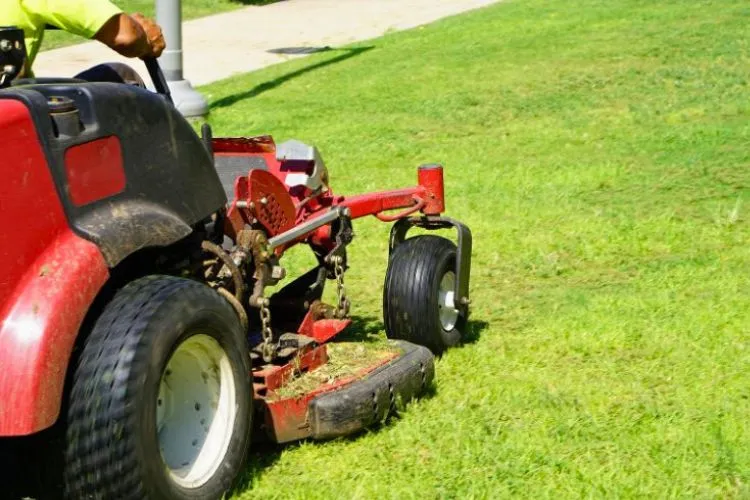
Faulty transmission
The transmission is a complex system that transmits power from the engine to the wheels. It’s responsible for controlling the speed and direction of your mower.
In neutral, the transmission is supposed to disengage the engine from the wheels, allowing the mower to be pushed freely.
However, a faulty transmission may not fully disengage, making it seem your mower is stuck even in neutral. Causes of a faulty transmission can be numerous, from worn-out gears and bearings to low or contaminated transmission fluid.
Over time, these components can wear out or break, leading to an inability to shift into neutral properly.
Damaged shift linkage
The shift linkage plays a key role in changing gears in your mower, including shifting to neutral. This linkage is a system of rods, levers, and cables that connect the shift lever to the transmission.
If these parts are damaged or misaligned, they might not be able to move the transmission into neutral, even if the shift lever is in the correct position.
Damage to the shift linkage can occur due to excessive force while shifting, lack of lubrication, rust, or general wear and tear over time. Bent or broken linkages will need replacement or repair to allow the mower to function correctly again.
Worn-out clutch or clutch cable
The clutch in your riding mower is another essential part that can influence the mower’s ability to be pushed in neutral. The clutch engages and disengages the engine’s power to the transmission, thereby controlling the power sent to the wheels.
When you shift to neutral, the clutch should disengage the power, letting the mower roll freely.
However, a worn-out or stretched clutch cable might not completely disengage, keeping the mower from moving in neutral. This can happen due to repeated use, poor maintenance, or an overloaded mower. If the clutch components are worn out, they must be replaced to resolve the issue.
Electrical reasons
While mechanical issues are often the culprits, the cause of your mower’s refusal to move in neutral might be rooted in its electrical system.
Two key electrical components can play a part in this issue: safety switch malfunctions and wiring problems that affect the transmission. Let’s delve into these in detail.
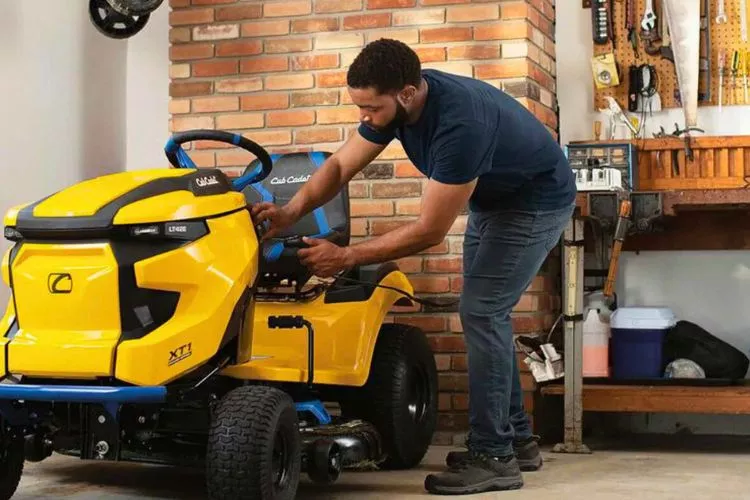
Safety switch malfunctions
Modern riding mowers come equipped with safety switches to prevent accidents and protect the mower’s mechanical integrity.
One such switch is typically connected to the transmission system. It’s designed to prevent the mower from starting when it’s in gear or prevent it from being moved when the engine is running.
However, if this safety switch malfunctions or fails, it might wrongly indicate that the engine is running even when it’s off, preventing the mower from moving in neutral.
Dirt, moisture, or a simple malfunction due to age could be the reason behind a faulty safety switch. If it’s the cause, the switch would need to be tested and, if necessary, replaced to get your mower moving again.
Wiring issues affecting the transmission
Your riding mower’s electrical system involves a network of wires that transmit electrical signals to various components, including the transmission system.
Any issue in this network, such as a loose connection, corroded wires, or a short circuit, could impact the transmission’s functioning.
For instance, faulty wiring might not send the correct signals to the transmission when the mower is shifted into neutral, leaving it engaged and unable to be pushed.
Identifying and resolving these wiring issues can be tricky due to the electrical system’s complexity, but it’s a critical step to get your mower back in action.
Regular inspections can help identify and rectify wiring problems before they escalate into significant issues.
Troubleshooting and Solutions
Now that we’ve identified the common causes that might make your riding mower resist movement in neutral let’s explore how you can troubleshoot these issues and find the right solutions.
After all, knowing the problem is only half the battle; the other half is finding a way to fix it. Let’s get started.
Safety Precautions
Before we start delving into the troubleshooting process, it’s crucial to remember safety comes first. While dealing with the mechanical and electrical systems of your riding mower, keep these precautions in mind:
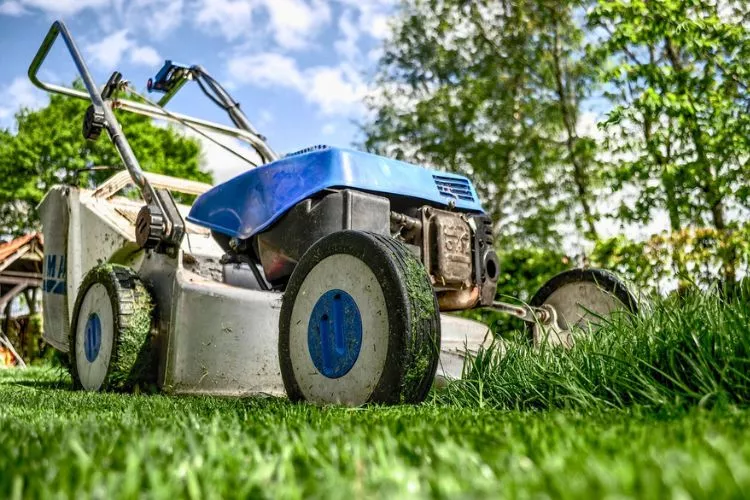
Disconnecting spark plugs
The spark plug in your mower is responsible for sparking combustion in the engine. It’s essential to disconnect the spark plug before starting any troubleshooting or repairs to prevent accidental startups.
This is as simple as locating the spark plug (usually on the front or side of the engine), grasping the spark plug wire boot, and pulling it to disconnect.
Blocking wheels to prevent rolling
Whenever you’re working on your riding mower, especially the transmission or clutch system, ensure the mower doesn’t roll away or tip over.
You can do this by blocking the wheels with solid objects like bricks or large pieces of wood. This can prevent accidents and make it easier to work on your mower.
Step-by-step Troubleshooting Guide
With safety precautions in place, we can start with troubleshooting. Remember, it’s a systematic approach where one step leads to the next:
Checking the shift lever and linkage
Start by inspecting the shift lever and linkage for any signs of damage or misalignment. Ensure the lever is securely attached and moves smoothly between gears.
Check the linkage for any bends, breaks, or signs of wear. It might be time for a replacement or adjustment if anything seems out of place.
Inspecting the clutch system
Next, take a look at the clutch system. Check if the clutch pedal is loose or if there’s any slippage when you engage the clutch.
A worn-out clutch might not disengage fully, making the mower difficult to push in neutral. It might need replacing if the clutch or clutch cable appears worn or stretched.
Verifying safety switch functionality
Safety switches are designed to protect you and your mower, but a malfunctioning switch can cause problems. Using a multimeter, you can test the switches for continuity, a sign they function correctly.
If a switch isn’t functioning as it should, it could be why your mower isn’t moving in neutral.
Examining the electrical system
Lastly, do a quick check of the electrical system. Look for any loose connections, corroded wires, or signs of a short circuit. Be aware that dealing with electrical systems can be dangerous if not done correctly, so if you’re uncomfortable doing this, consider seeking professional help.
Electrical issues can significantly impact the transmission and other systems in your riding mower, so they should not be overlooked.
DIY Solutions
If you’re comfortable with a wrench and have some mechanical intuition, several problems can be handled right in your garage. Here are some DIY solutions that might get your riding mower moving in neutral again:
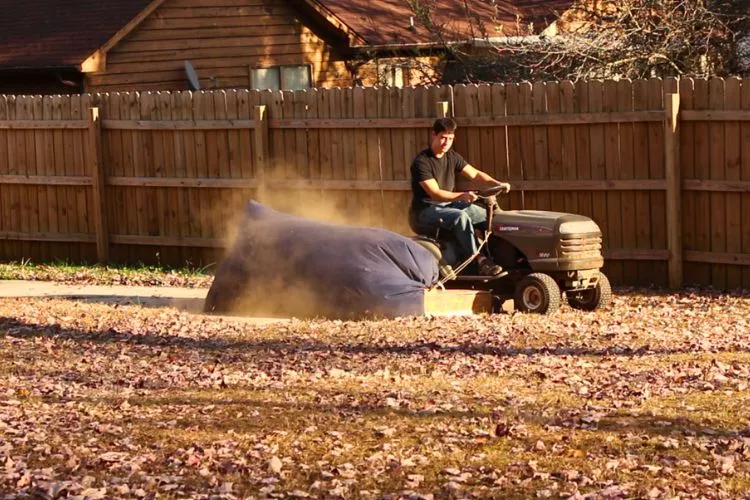
Adjusting the shift linkage
Sometimes, your mower’s neutral issues might be due to a misaligned shift linkage. Usually, there’s an adjustment mechanism near where the linkage connects to the transmission.
Adjusting it according to the manufacturer’s instructions could bring back the smooth gear shifting, enabling the mower to be pushed in neutral.
Replacing the clutch components
You might need to replace the components if the clutch system shows excessive wear or malfunction. It could be a clutch disk, the clutch cable, or even the entire clutch assembly, depending on the design of your mower.
At the same time, it requires some mechanical skill; a clutch replacement can often be done at home with the right tools and some patience.
Repairing or replacing safety switches
If you’ve found a faulty safety switch during your troubleshooting, the solution is usually a replacement. Safety switches are generally inexpensive and relatively easy to replace. However, ensure the replacement part is compatible with your mower’s make and model.
Professional Repairs
While DIY repairs can save money, there are times when professional help is not only recommended but required. Let’s discuss when it might be necessary:
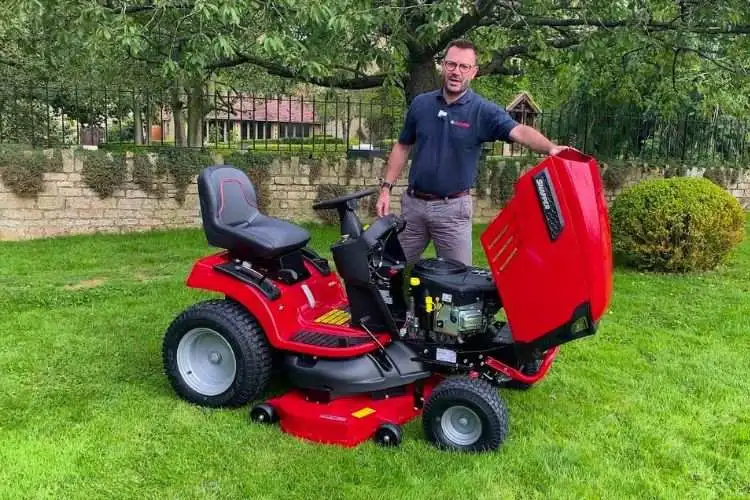
When to seek help from a technician
If you’re uncomfortable working with mechanical or electrical systems, leaving it to the professionals is best. Similarly, if your troubleshooting doesn’t identify the issue or the repair seems too complicated, it’s safer and often more efficient to seek help from a trained technician.
Finding a reputable repair service
When choosing a repair service, look for one that has good reviews, particularly from customers with the same mower brand as yours. Ensure they’re licensed and insured, which generally indicates a certain level of professionalism and responsibility.
Cost considerations
When dealing with professional repairs, it’s crucial to have a solid understanding of the potential costs involved. Generally, repair costs can be broken down into two categories: labor and parts. Labor is usually charged hourly, while parts’ costs depend on what needs to be replaced or repaired.
Labor costs vary widely based on the service center’s location and reputation. On average, you might expect to pay anywhere from $50 to $100 per hour (or even more sometimes). The complexity and length of the repair job will also impact the final labor cost.
The cost of parts also varies greatly depending on the specific components that need replacement. For example, a new clutch assembly might cost between $50 and $200, depending on the mower’s brand and model.
On the other hand, safety switches, often a cause for the mower not moving in neutral, are inexpensive and might only set you back about $10 to $20 each.
As a hypothetical example, let’s say you’ve diagnosed a faulty clutch system in your riding mower. Between the cost of the clutch assembly, which we’ll estimate at $100, and two hours of labor at a rate of $75 per hour, you’d be looking at a total of $250 for a professional repair.
Of course, these are only rough estimates. It’s always a good idea to ask for an estimate from the repair service before committing.
And remember, while professional repair may seem costly upfront, the value lies in the peace of mind of knowing that your mower has been repaired correctly and safely, potentially preventing more costly issues.
Preventive Maintenance
Taking care of your riding mower isn’t just about tackling problems as they arise—it’s also about preventing those problems from popping up in the first place.
With some preventive maintenance, you can keep your mower running smoothly and prolong its lifespan, helping you avoid stressful (and potentially dangerous) situations like being unable to push the mower in neutral. Let’s dive into some preventive measures:
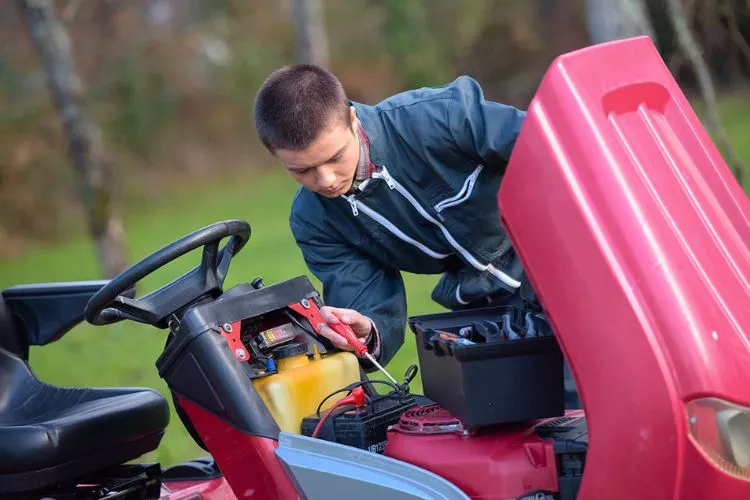
Regular inspection and servicing
Consistent inspection and servicing are the cornerstones of preserving your riding mower’s performance and lifespan. Begin by cultivating the habit of performing a quick, thorough check before each use.
Look over the components like belts, cables, and other moving parts for signs of wear or damage. Don’t overlook leaks—oil or fluid leaks can hint at more severe issues that require immediate attention.
Next, follow a routine servicing schedule. A typical servicing routine includes changing the engine oil, replacing air filters, and sharpening mower blades. Depending on your mower’s use and model, you might need to periodically replace the spark plug and change the transmission fluid.
It’s best to refer to your mower’s user manual for precise servicing intervals and procedures. With regular servicing, you can nip potential problems in the bud and ensure your mower operates at its peak efficiency.
Lubrication of critical components
Keeping critical components well-lubricated is another crucial aspect of preventive maintenance. Proper lubrication minimizes friction among moving parts, reducing wear and tear, and enhancing overall operation.
Key components to lubricate include the shift linkage, the clutch assembly, and the transmission system.
Ensure you use a high-quality lubricant, preferably the one your mower’s manufacturer suggested. Regular lubrication can prevent many problems, including the inability to push your riding mower in neutral.
You’ll be rewarded with smooth, trouble-free operation for many mowing seasons to come by taking a few minutes to lubricate your mower’s critical components.
Cleaning and debris removal
Keeping your riding mower clean isn’t just about aesthetics—it plays a significant role in its performance and longevity.
Debris, like grass clippings, leaves, and even small sticks, can accumulate in different parts of your mower, possibly leading to mechanical and electrical issues.
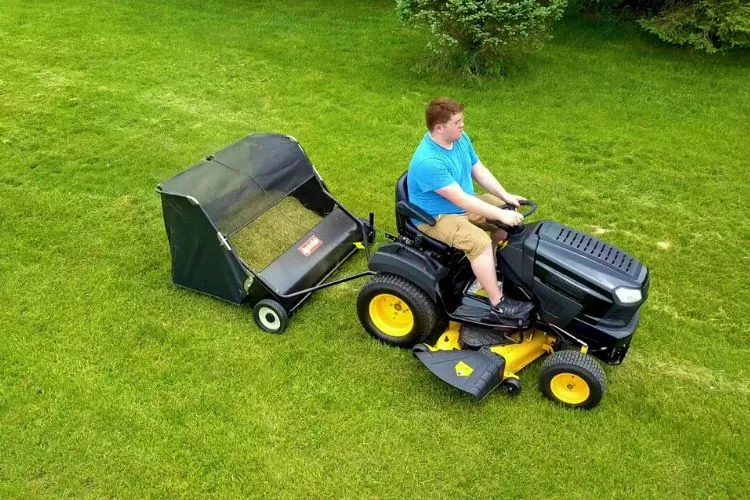
For instance, lodged debris could interfere with the shift linkage, contributing to problems like the inability to push your mower in neutral.
After each mowing session:
- Take a few minutes to clean your mower.
- Brush off loose debris and consider washing the exterior with a garden hose.
- Be careful not to spray water directly at the engine or electrical parts.
You might also need to remove and clean the cutting deck occasionally for thorough cleaning. Ensuring your mower is debris-free goes a long way in preventing potential issues.
Proper storage during the offseason
Proper storage of your riding mower during the offseason is a vital aspect of preventive maintenance that’s often overlooked. Leaving your mower exposed to harsh weather conditions can cause corrosion and other damage, leading to various operational issues.
Before storing your mower for the offseason, ensure it’s clean and well-serviced. Change the oil, replace air filters, and sharpen or replace the blades. Drain the fuel system or add a fuel stabilizer to prevent fuel degradation.
When it comes to the storage location, choose a dry, covered area. Storing your mower on the ground where it can be exposed to moisture can cause rusting—consider using blocks or a pallet to elevate it.
These steps can help protect your mower during the offseason and ensure it’s ready to go when the mowing season begins again.
Pro Tips for Maintaining a Smooth-Running Riding Mower
Maintaining a smooth-running riding mower extends beyond fixing issues as they arise—it’s about proactive measures preempting potential problems. Here are some pro tips to help you ensure your mower always operates at its best.
From keeping an eye on oil levels to proper storage, these practical pointers will keep your riding mower purring like a kitten!
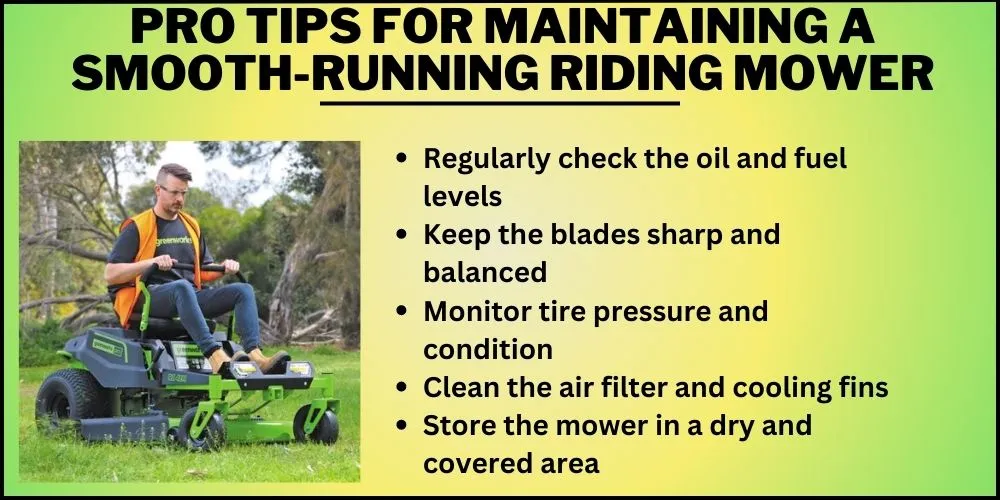
Regularly check the oil and fuel levels
The lifeblood of your riding mower is its oil and fuel. Regularly checking these levels is crucial to your machine’s overall health. Low oil levels can cause overheating and damage internal parts, while a fuel shortage can affect the engine’s performance.
Stick to a regular schedule of oil changes based on the manufacturer’s guidelines, and ensure your mower always has sufficient fuel before use.
Keep the blades sharp and balanced
The condition of your mower’s blades directly impacts its performance. Dull blades tear at grass rather than cut cleanly, leaving your lawn looking ragged and unhealthy. Sharpen your blades regularly to keep those cuts crisp and even.
Additionally, ensure the blades are balanced—a lopsided blade can cause uneven cuts and put undue stress on the mower’s motor.
Monitor tire pressure and condition
Your mower’s maneuverability depends significantly on the condition of its tires. Under-inflated tires can make it difficult to steer your mower and result in uneven mowing, while over-inflation can cause a rough ride and potentially damage the tires.
Check the tire pressure regularly (the correct pressure should be listed in the owner’s manual), and inspect tires for signs of wear or damage. If the treads are worn down or if there are any punctures, it’s time for a replacement.
Clean the air filter and cooling fins
Your riding mower’s air filter protects the engine from harmful debris. If it becomes clogged or dirty, it can starve your engine of air, leading to inefficient combustion and, ultimately, reduced performance. Clean or replace your air filter regularly based on usage and the filter’s condition.
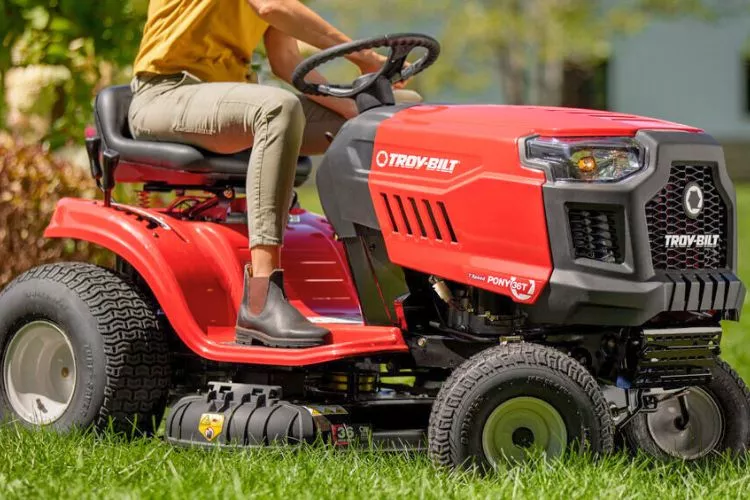
Similarly, keeping the cooling fins clear of grass clippings and debris will ensure the engine is efficiently cooled and doesn’t overheat.
Store the mower in a dry and covered area
Proper mower storage can significantly extend its lifespan and keep it in good working order. When not used, especially during the off-season, ensure the mower is stored in a dry and covered area. This will protect it from the elements and prevent rust or corrosion.
Additionally, consider using a fuel stabilizer if you won’t use the mower for an extended period, and ensure it’s clean before storage. Dust, grass clippings, or moisture can lead to rust or other damage.
Frequently Asked Questions (fAQs)
Can I push the mower manually if it’s stuck in neutral?
You can attempt to push your mower manually when it’s stuck in neutral, but it could be challenging due to resistance from the transmission. Consider troubleshooting first for a safer and more effective solution.
Is it safe to bypass safety switches to resolve the issue?
Bypassing safety switches isn’t recommended. These switches are designed to protect you and your mower from damage. Avoid overriding them unless you’re certain it’s safe and necessary.
How can I differentiate between a mechanical and electrical problem?
Mechanical problems often manifest as visible wear or component damage, while electrical issues may cause sudden or intermittent failures. Regular inspection and use of a multimeter can help differentiate.
Can I fix the issue myself, or should I call a professional?
Depending on the issue’s complexity, you can fix it yourself. However, calling a professional is advised for more serious or intricate problems, especially those related to the transmission or electrical system.
How to prevent riding mowers from not pushing in neutral in the future?
Regular maintenance, including inspecting, servicing, lubricating critical components, and cleaning your mower, can help prevent issues with pushing your mower in neutral in the future.
Conclusion:
We’ve unpacked the common reasons a riding mower might get stuck in neutral, from mechanical issues like faulty transmissions to electrical problems like safety switch malfunctions.
The importance of timely troubleshooting and regular maintenance cannot be overstated. Keeping a keen eye on your mower’s condition can save you time, money, and headache.
Remember, an ounce of prevention is worth a pound of cure. We hope that this guide has been helpful. You can read about similar topics here on our website. Check back again soon for more.

